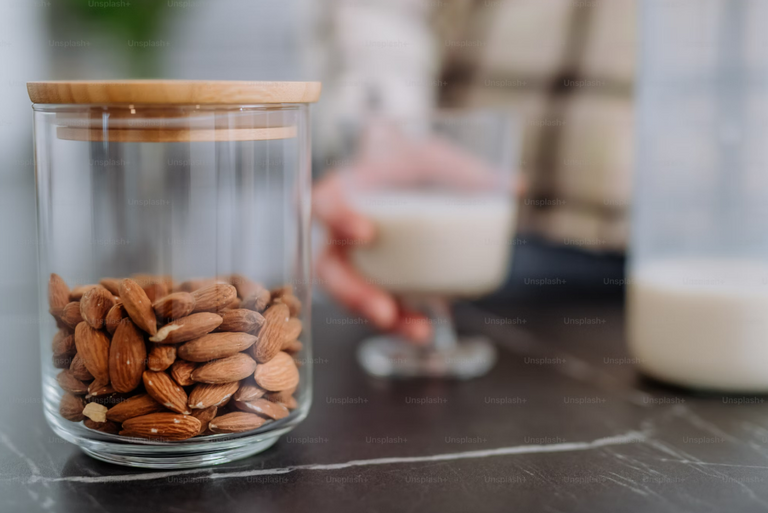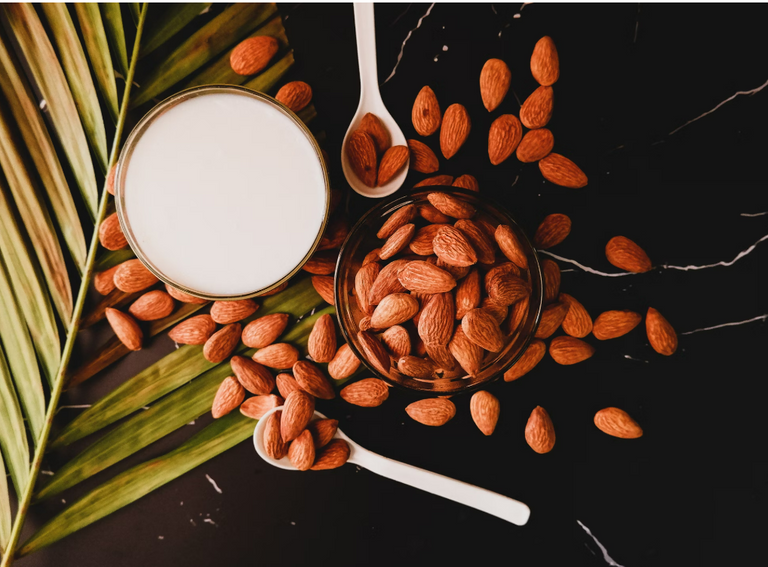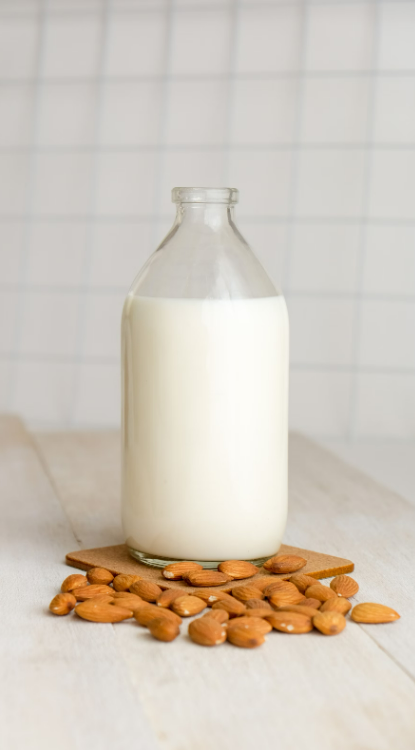It’s easy, customizable, and free from additives commonly found in store-bought versions!
Ingredients:
- Raw almonds – 1 cup (preferably organic)
- Water – 4 cups (for blending) + extra for soaking
- Optional Sweeteners/Flavorings:
- Maple syrup, honey, or dates (1–2 tbsp or 1–2 dates)
- Vanilla extract (½ tsp)
- Pinch of salt
- Cinnamon or nutmeg (for a spiced version)
Tools Needed:
- Blender (high-speed is best for smooth milk)
- Nut milk bag, fine-mesh strainer, or cheesecloth
- Large bowl or jug
- Airtight bottle or jar for storage
Step-by-Step Instructions:
Step 1: Soak the Almonds
Place the almonds in a bowl and cover them with water. Let them soak for at least 8–12 hours or overnight.
- Soaking softens the almonds, making them easier to blend and improving the texture of the milk.
- If you’re short on time, soak them in hot water for 1–2 hours.
After soaking, drain and rinse the almonds under cold water.
Step 2: Blend the Almonds
- Add the soaked almonds and 4 cups of fresh water to your blender.
- Blend on high for about 1–2 minutes, or until the almonds are completely broken down and the mixture looks creamy and white.
Step 3: Strain the Milk
- Place a nut milk bag, fine-mesh strainer, or cheesecloth over a large bowl or jug.
- Pour the blended almond mixture into the strainer. Let the liquid flow through, then squeeze or press the pulp to extract as much milk as possible.
- The leftover almond pulp can be saved for other uses (see tips below).
Step 4: Flavor and Sweeten (Optional)
- Return the strained milk to the blender.
- Add any desired sweeteners or flavorings, such as maple syrup, vanilla extract, or a pinch of salt.
- Blend again for a few seconds to mix evenly.
Step 5: Store the Milk
- Transfer the almond milk to a clean, airtight bottle or jar.
- Refrigerate and consume within 3–5 days. Shake well before each use, as natural separation may occur.
Tips & Variations:
Consistency Adjustments:
- For creamier almond milk, use a 1:2 or 1:3 almond-to-water ratio.
- For lighter milk, add more water.
What to Do with Leftover Almond Pulp:
- Use it in baked goods like muffins, cookies, or pancakes.
- Mix it into oatmeal or smoothies.
- Dry it out in the oven and use as almond flour.
Flavor Ideas:
- Chocolate Almond Milk: Blend in 1–2 tbsp of cocoa powder and a sweetener.
- Spiced Milk: Add cinnamon, nutmeg, or cardamom for a warm flavor.
- Berry Almond Milk: Blend with fresh or frozen berries for a fruity twist.
Other Nut Options: This method works with cashews, hazelnuts, or pecans if you want to try different nut milks.
Why Make Almond Milk at Home?
- It’s free of preservatives, thickeners, or added sugars.
- You can control the sweetness, flavor, and consistency.
- It’s cost-effective compared to store-bought almond milk.



